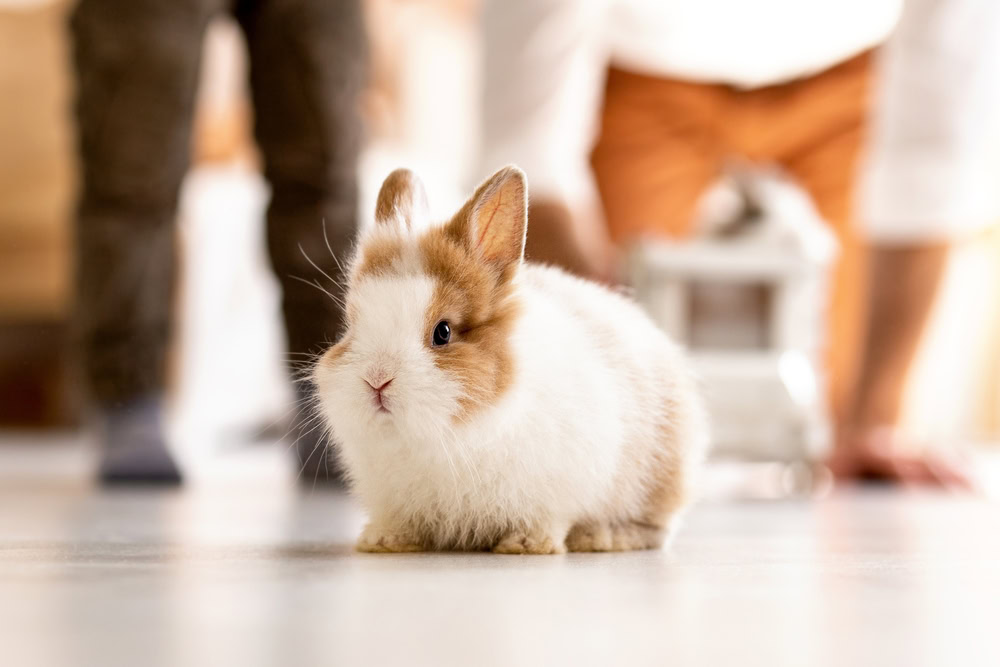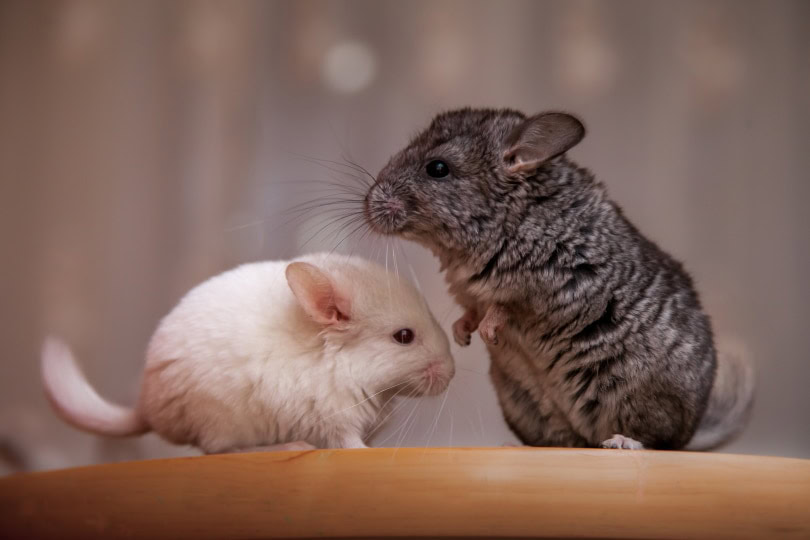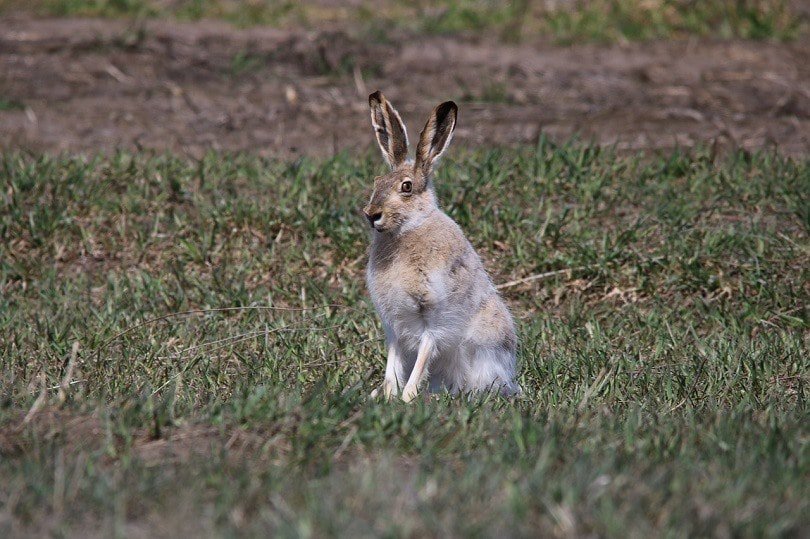VET APPROVED

The information is current and up-to-date in accordance with the latest veterinarian research.
Learn more »Click to Skip Ahead
The animal kingdom has a variety of unique species with different dynamics and personalities that are critical for animal lovers and enthusiasts to understand, as they will determine which pets can be kept together and which aren’t good matches.
When it comes to pet relations, there is one question that many pet enthusiasts would like to have answered: Do cats and rabbits get along? Or is it best to keep them apart?
Cats and rabbits can occasionally get along, depending on their personality and several other factors, if they have been socialized with each other from an early age and when their interaction is under constant supervision, but even this is not a guarantee. You should know how the dynamics between these two animals function and how they can live in the same household safely.
Read on to learn how to keep these two species in the same household, which precautions to take, and more.
Please note that introducing these two species comes with several significant risks for both animals’ health and welfare, and is best avoided in most cases. Even the exceptions where two pets may seem to get along, carry a high risk and one or both animals may get severely injured in the process or worse. Consult with a veterinarian first before attempting to introduce the two species.

Can Cats and Rabbits Coexist?
Cats and rabbits are animals with entirely different dynamics. Felines are predators and natural-born hunters, while rabbits are prey animals, which is one of the main reasons they often can’t coexist with one another safely. But are there any exceptions?
Pet cats and rabbits can sometimes get along if properly and adequately introduced, largely depending on their age, size, and personality, but even this is not a guarantee that the cat won’t try to hurt the rabbit at a later date. Although there have been examples of these two species living together in harmony, this is a less common outcome and is generally not worth the risk for the rabbit’s health and wellbeing.
Very few rabbits will be able to get along with felines safely. There are several factors that could determine the relationship between your feline and your bunny:
- Introduction age — Cats and rabbits that grow up together are more likely to get along than those introduced in adulthood. Kittens may be more easily introduced to rabbits, as they are more likely to be fearful and respectful of the rabbit’s territory and less likely to see them as prey. However, adult rabbits may injure the kitten.
- Personality — While some rabbits and cats have the potential to get along, their personality and temperament will affect their relationship. In perfect situations, the rabbit will be fearless and assertive but not overly aggressive/territorial, and the cat will have more of a docile and submissive temperament.
- Size/breed — If you plan on keeping these animals together in the same household, it’s best to look for a large rabbit breed and a small breed cat, so the animals end up similar in size. It’s also beneficial to look for cat breeds with calm temperaments and a low prey drive.
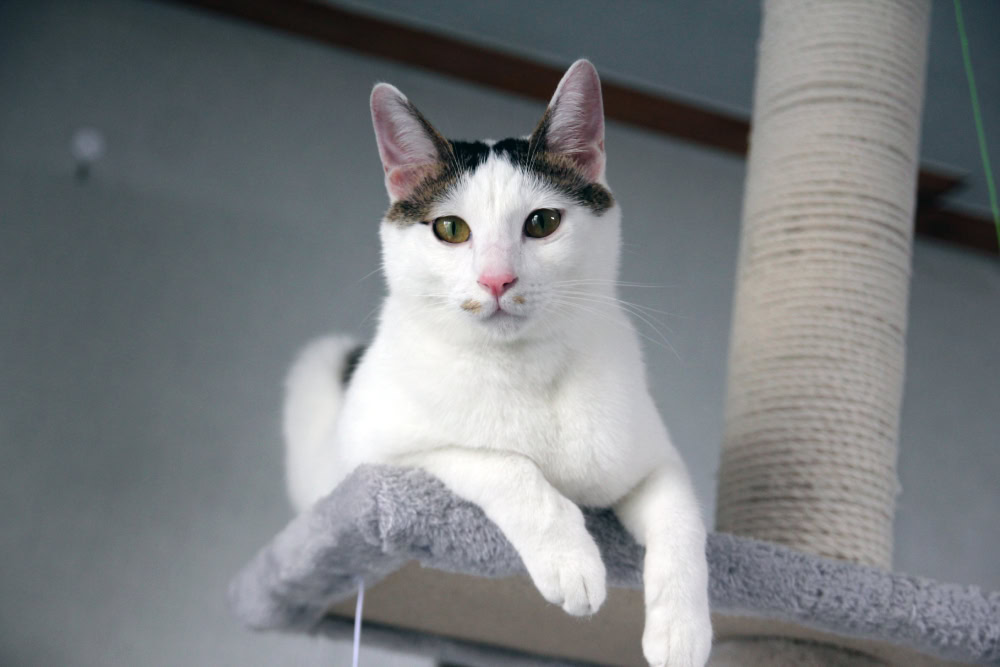
Should You Introduce Cats and Rabbits?
Now that you know more about the factors determining how a cat and a rabbit can get along, you may wonder if you should and how to introduce the two animals.
Generally, you shouldn’t. There is no reason for these two pets to interact. They can and will both live a happy and fulfilled life, without any need whatsoever to interact with the other pet. This way you will prevent any potential risks of the animals hurting each other, and the cat chasing or killing the rabbit. Even if these two species get along well for months or years, any sudden rabbit movement and running may set off the prey drive in the cat, leading to disastrous consequences for the rabbit.
However, there may be some rabbits and kittens that may be able to get along safely, if supervised at all times, although this is quite rare. For this instance, here’s a list of tips that may help you make the introduction go as smoothly as possible:
- Choose a suitable time of the day — When introducing a cat and a rabbit for the first time, it’s best to choose a time when your cat is fully fed and somewhat sleepy. That should lower the chances of them trying to chase/harm the rabbit.
- Find a neutral and safe space for the introduction — Choose a safe and neutral space that neither animal uses too much. This is vital because rabbits can be territorial
- Keep both pets inside a carrier/crate — During the first few introductions, keep both animals enclosed in a crate or carrier to provide extra safety and space between them. This way, your pets can look at one another if they wish so, or seek a secure hideout in the safety of their crate, and you can ensure that both of your furry companions look and feel comfortable. Stop the encounter if any of the animals start acting stressed, aggressive, or anxious.
- Allow animals to get familiar with one another — If the encounter is going well and both animals seem calm, you can bring the crates/carriers closer and after several longer sessions, you may allow the animals to sniff each other to catch each other’s scent. For cats and rabbits that seem to tolerate this interaction, you can repeat the same process every day to help the animals get acquainted even more.
- Be positive throughout the process and reward both animals — During the first and all other encounters, practicing positive reinforcement and creating positive associations for both pets should reduce the chances of negative reactions or fear, by using a calm and reassuring voice and plenty of tasty treats.
- See how the situation goes — You should monitor your pets and their encounters at all times to provide safety. If the animals seem comfortable with one another, you can allow the animals to interact without a carrier/crate. However, we only suggest you do this with kittens and not adult cats, to minimize the risk of mishaps and your rabbit ending up hurt. However, an adult rabbit may be able to hurt a kitten, so constant supervision will always be necessary.
- Exercise the rabbit on their own — If your rabbit has free access to a room or part of your home during a certain time, ensure they are on their own and that the cat has no access to this area. This is the time the rabbit may hop around, exercise and play, and this may stimulate the cat’s predatory behavior.
- Never force the two animals to interact — If one or both animals seem stressed, scared, or insecure, stop the interaction immediately. Ensure the rabbit always has a secure hideout away from the cat.
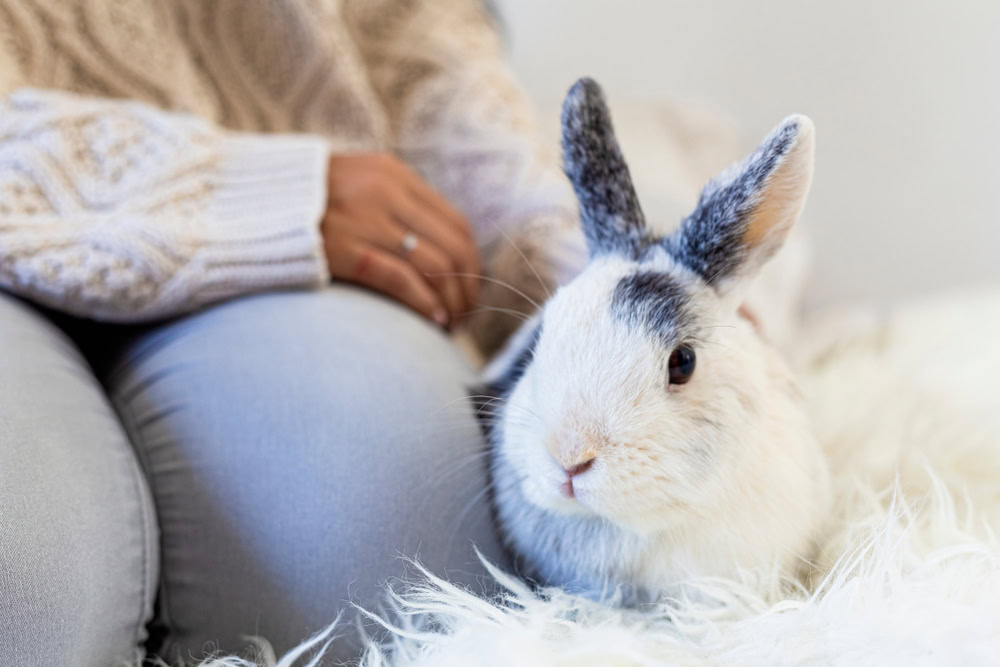

Safely Keeping Cats and Rabbits Together
Although cats and rabbits would not make the best companions in the wilderness, these animals can tolerate each other in calm in-home environments, if both are provided with a safe and secure space, not being disturbed or threatened by the other pet. You need to remember that you are in charge of keeping everything flowing smoothly and that the cat and rabbit are able to coexist in the same home if certain conditions are met.
Here’s what you should always keep in mind if you want these pets to coexist.
Never Force Your Pets to Interact
While it may seem like a sweet idea to introduce your pets and have them instantly play and become good friends, such situations are unlikely, if not impossible, especially when talking about cats and rabbits.
You should never force your pets to interact. Any interaction should feel comfortable for everyone and go at a pace that feels safe for both animals. Otherwise, you should stop the interaction, as any sign of stress, fear, or discomfort could lead to injuries or health issues and make the animals develop negative feelings about the experience.
Provide Both Pets With Separate Spaces
Both cats and rabbits are territorial animals, which is why they should have their own separate spaces inside your home where they’ll feel safe and comfy. The rabbit zone should always be cat-free and vice versa.
Also, provide separate feeding areas for both pets, as well as a separate exercise area.
Monitor All Interactions
Even if it seems like your cat and your rabbit are getting along perfectly well, you should never feel too comfortable letting these animals roam free around one another.
Animals can quickly change their dynamics, and one of your furry companions could get seriously hurt. You should monitor all interactions to prevent incidents and react if necessary.
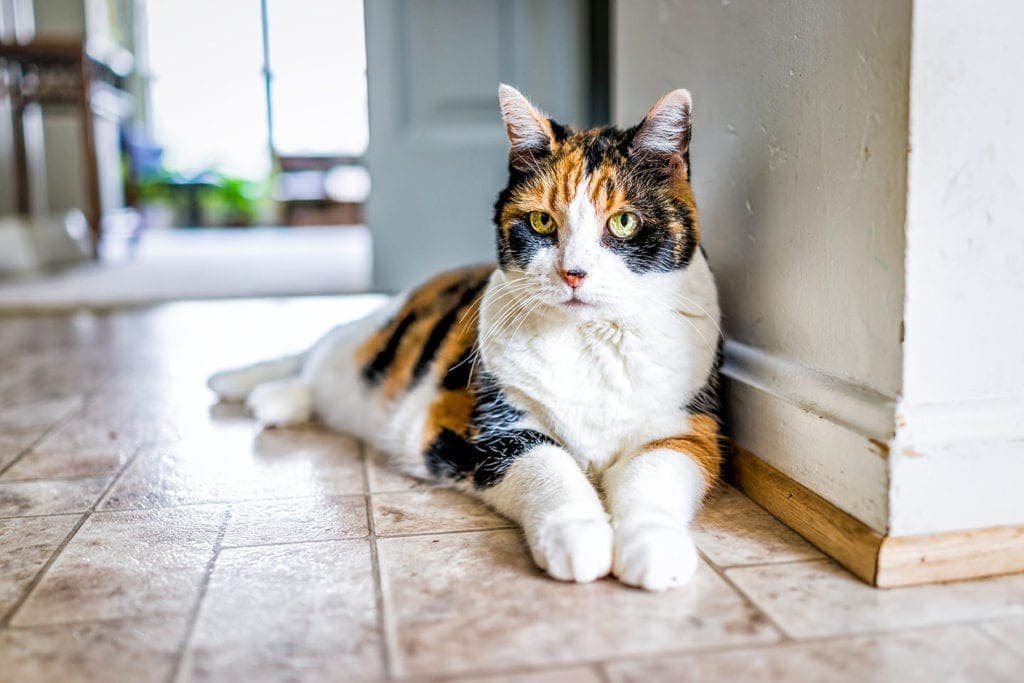
Possible Risks of Keeping Cats and Rabbits Together
While some cats and rabbits have the potential to get along, keeping these animals together also carries several risks. One of the biggest and probably scariest risks is the feline hurting, injuring, or even killing the rabbit due to their natural hunting instincts. That said, while cats are capable of hurting rabbits, there’s also a possibility of your rabbit acting aggressive and territorial, trying to hurt your cat or kitten.
Another luckily far less common issue with keeping these furry companions together is the possibility of transferring some parasites, bacteria, or diseases from one animal to another. Certain infections, such as tularemia, that can be transferred between rabbits and cats, although very uncommon, could be serious, so there are extra precautions that you should take to keep both pets healthy.
Overall, animals can be unpredictable, which is why it’s important to closely monitor all interactions between your cat and rabbit if you want to keep them safe and reduce risks. Keeping these two pets entirely separated is the only way to fully remove all risks of either of them getting injured or worse, and they will still be able to live a happy and fulfilled life.

Final Thoughts
Sometimes cats and rabbits can get along, but this is often the exception rather than the rule. A probable scenario is that they may develop a tolerable bond but never become good friends due to the predator-prey relationship, which is why you should always monitor their encounters to keep them safe. They may injure each other at any stage even if supervised, and instead of letting them interact, keeping each pet separate in their own secure area at all times, providing them with the environmental enrichment they need, and fulfilling their requirements for a healthy and stress-free life, is a safer solution for both of them.
Featured Image Credit: VOLHA KAZLOUSKAYA, Shutterstock
